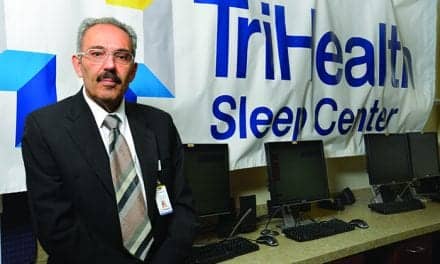A recently published study, funded by Royal Philips, revealed that although positive airway pressure (PAP) therapy was associated with a reduction in hospitalization, more than 92% of patients studied were not receiving it in any form.
The retrospective study led by Sairam Parthasarathy, MD, professor of medicine and interim chief of Division of Pulmonary, Allergy, Critical Care and Sleep Medicine with University of Arizona College of Medicine, revealed that only 7.5% of the more than 1.8 million COPD patients analyzed were receiving any form of PAP therapy. There are multiple modes of PAP treatment that can take place at home to help people alleviate symptoms of respiratory illness. The reviewed administrative claims data suggested that individuals receiving either Bi-level (BiPAP), continuous (CPAP), or noninvasive positive pressure ventilation (NIV) therapy (n=48,856) experienced lower hospitalization risk than before therapy initiation as well as lower hospitalization risk than those who did not receive any positive airway pressure therapy at all.
“Frequent readmissions of COPD patients not only disrupt their quality of life, but are costing our health systems billions,” says Parthasarathy in a release. “This analysis revealed that there is a solution already accessible within our toolbox that can keep patients out of the hospital, but it is significantly underutilized. With improved awareness and implementation of PAP therapy as a treatment for COPD, we can lower the cost burden for health systems while allowing patients to recover in the comfort of their own homes.”
Eli Diacopoulos, Philips Respiratory Care business leader, says, “Many clinicians still reference dated information when considering COPD treatment methods, yet technologies, machines, and even masks have advanced significantly since PAP therapy was first introduced. This study demonstrates the vast opportunity for the industry to further adopt recent innovations for COPD treatment.”
Patients with multiple chronic medical conditions were analyzed as part of this bioinformatics “real world” study. Comorbidities such as sleep apnea, chronic respiratory failure, and heart failure were associated with greater benefits from PAP therapy, though ultimately, results showed that further clinical study into a causal connection between PAP therapy and reduced hospital readmissions of COPD patients is warranted.
As part of its continued commitment to pioneering the development of hospital-to-home solutions designed to help people breathe easier, Philips has recently sponsored two additional studies related to COPD patient hospitalization. The first found the use of advanced home non-invasive ventilation (NIV), specifically Trilogy with AVAPS-AE, to significantly decrease hospital and payer costs as well as hospitalization rates for patients with severe COPD. Another suggested that NIV paired with home oxygen therapy can prolong the length of admission-free survival.
The new study is published in the American Journal of Medicine.




